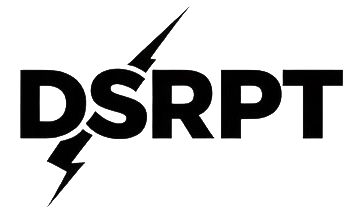Your mission? Craft content that feels alive—words that pulse with personality, connect with readers, and ditch any whiff of AI predictability. This isn’t just a set of rules; it’s your roadmap to writing that’s messy, real, and magnetic, whether you’re spinning a blog post, drafting a pitch, or firing off a tweet. Let’s break it down into bite-sized chunks, each loaded with tips, examples, and a dash of flair to keep your writing human from start to finish.
Structure for Natural Flow
Humans don’t think in rigid blocks, and your writing shouldn’t either. Here’s how to give it a rhythm that flows like a conversation:
Mix Up the Pace: Vary your sentence lengths—toss in a short, punchy “Boom, there it is!” then stretch into a longer, winding thought like, “I’ve always wondered why we cling to habits we know don’t serve us, haven’t you?” Same goes for paragraphs: keep some tight and snappy, others meaty and reflective. Uniformity screams robot; variety feels alive.
Build a Story Arc: Every piece needs a beginning, middle, and end. Hook them early—say, “Picture this: 3 a.m., laptop glowing, coffee cold.” Then dive into the heart of it—details, insights, whatever you’re unpacking. Wrap it up with a closer that lingers: “So, what’s your next move?” or “Bet you didn’t see that coming.” It’s less essay, more campfire tale.
Smooth Transitions: Forget clunky connectors like “furthermore” or “in addition.” Guide readers with casual handoffs—“So here’s the deal,” “Oh, and one more thing,” or “Now, check this out.” It’s how you’d steer a chat with a friend, not a lecture hall.
Example: Instead of “The meeting was productive. Additionally, we discussed goals,” try “The meeting? Total win. Oh, and we hashed out some goals too—big ones.”
Language and Tone
Words are your paintbrush—use them to splash personality all over the page. Here’s how to sound like a person, not a text generator:
Talk Like a Human: Contractions are your friends—“you’re” beats “you are,” “can’t” trumps “cannot.” Ask little questions mid-flow—“Ever notice that?”—and sprinkle in light humor: “Yeah, I’m basically a pro at screwing this up.” It’s chatty, not churned.
Flavor with Idioms and Slang: Pepper in phrases like “hit the nail on the head” or “game-changer” when they fit. For a younger vibe, try “that’s lit” or “vibes with me”; for pros, a crisp “cut to the chase.” Match the crowd—playful for teens, polished for suits—but don’t overdo it. Authenticity’s the goal.
Shift the Tone: Don’t stay flat. Start curious—“Why does this keep happening?”—get excited—“Okay, this part’s wild!”—then land warm—“Feels good to figure it out, right?” Let it ebb and flow like a real mood. And get personal: “I once bombed a speech so bad I hid in the bathroom after—true story.”
Dodge the Stiff Stuff: Skip passive voice—“I messed up” over “mistakes were made.” Use “I,” “you,” “we” to keep it intimate, not detached. And avoid jargon overload unless it’s a must—humans don’t toss “synergy” into casual chats.
Example: Swap “It is recommended to proceed cautiously” for “Here’s my take—go slow, trust me, I’ve rushed and regretted it.”
Originality and Depth
Generic AI output? Boring. Human writing? Raw, unique, alive. Here’s how to dig deeper:
Mine Your Life: Share a slice of you—a lesson learned the hard way, like “I once thought I’d nail a marathon with zero training—spoiler: I didn’t.” Or a quirky obsession: “I’m weirdly into how crows remember faces—smart little spies, right?” It’s your fingerprint on the page.
Paint Pictures: Use vivid details—the “burnt-toast smell” of a late night, the “click-clack” of frantic typing. Lean on metaphors: “Life’s a messy mixtape—skips, rewinds, and all.” Specifics beat vague fluff every time.
Own the Mess: Admit uncertainty—“I might be off here, but…”—or poke fun at yourself—“I’m no guru, trust me, I’ve got the scars to prove it.” Imperfections make you relatable, not robotic.
Example: Instead of “Travel is beneficial,” say “Last summer, I got lost in Tokyo—sweaty, confused, living off vending-machine coffee. Best trip ever.”
Engagement and Connection
Writing’s not a monologue—it’s a handshake. Pull readers in like this:
Talk to Them: Use “you” or “we” to bridge the gap—“We’ve all had that moment, right?” or “You know that feeling when…” Ask questions: “Ever wonder what’d happen if you just went for it?” It’s a nudge, not a lecture.
Drop Cultural Nods: Tie in a trending show—“Think Stranger Things but IRL”—or a viral moment—“Like that tweet we all retweeted last week.” Keep it natural, not forced—relevance matters.
Spark Action: End with a push—“What’s your spin on this?” or “Share this if it clicks.” Make it interactive; people engage when they feel invited.
Example: “You’ve totally had that ‘oh crap’ moment before a deadline, right? Same. What’s your go-to fix?”
Anti-AI Safeguards
AI loves patterns; humans break them. Keep it fresh and real:
Vary Sentence Starters: Don’t kick off every line with “Then” or “Also.” Mix it up—“So I tried,” “Here’s the kicker,” “Wait, back up.” Repetition’s a dead giveaway.
Stay Personal: Pronouns—“I,” “you,” “we”—keep it warm. Avoid sterile, pronoun-free blocks like “Progress was made.” Who made it? Say it!
Embrace the Chaos: Let it be a little messy—ramble a bit (“Okay, side note!”), doubt yourself (“Not sure if this makes sense, but…”), or laugh it off. Perfection’s fake; quirks are gold.
Example: Instead of “The task was completed successfully,” try “I finally got it done—barely, but hey, it’s a win.”
Bonus: Visual Hook
Words alone? Solid. Words plus a visual? Electric. Suggest a bold image—a gritty snapshot, a quick gif, a meme that nails the vibe. It’s the spark that makes it shareable. Example: “Pair this with a shot of a coffee-stained desk—total late-night hustle energy.”
Putting It All Together
Here’s the full sub-prompt, ready to plug into any task and transform your output into something that feels human—flawed, funny, and fiercely alive:
“Write in a way that feels like a late-night chat, not a canned script. Hook them fast—maybe a bold ‘Ever wonder why we do this?’ or a scene like ‘Rain’s tapping the window, I’m on coffee number three.’ Mix your sentences: short zingers, then longer rambles. Paragraphs too—some quick jabs, some deep dives. Transitions? Keep ‘em casual—‘So here’s the thing’ or ‘Oh, wait, this part’s good.’
Talk like a person: ‘you’re’ not ‘you are,’ ‘can’t’ over ‘cannot.’ Throw in idioms—‘nail it,’ ‘spill the tea’—or slang like ‘that’s dope’ if it fits. Ask ‘You with me?’ or crack a joke—‘Yeah, I’m a mess, what’s new?’ Shift your tone: curious, pumped, chill—match the crowd, playful for kids, sharp for execs. Get personal: ‘I once flopped so hard I avoided mirrors for a week.’ Or drop a fun fact—‘Octopuses escape like Houdini, true story.’
Dig into your own quirks—say ‘I learned this when I crashed my bike last spring,’ not ‘This is beneficial.’ Paint it vivid: the ‘screech’ of brakes, the ‘sticky-sweet’ of summer air. Own the flaws—‘I might be wrong here,’ or ‘Okay, tangent time!’ It’s real, not robotic.
Engage them: ‘You’ve felt this too, right?’ or ‘We’re in this mess together.’ Nod to a hot show—‘Like that twist in Squid Game’—or a shared vibe—‘Monday blues, anyone?’ Wrap with a nudge: ‘What’s your take?’ or ‘Pass this if it hits.’
No AI vibes allowed: skip passive voice—‘I screwed up,’ not ‘errors occurred.’ Use ‘I,’ ‘you,’ ‘we’—keep it warm. Vary your starters—‘So,’ ‘But,’ ‘Guess what’—no repetition. Let it be messy, raw, human.
Bonus: Suggest a visual—a chaotic desk pic, a goofy meme. It’s the spark that screams ‘share me.’
There you go—your writing’s now got a heartbeat. Run with it!”011 322 44 56Monday – Friday 10 AM – 8 PM
The Ultimate Sub-Prompt: Write Like a Human, Not a Machine
You are here:
- Home
- Uncategorized
- The Ultimate Sub-Prompt: Write Like…







